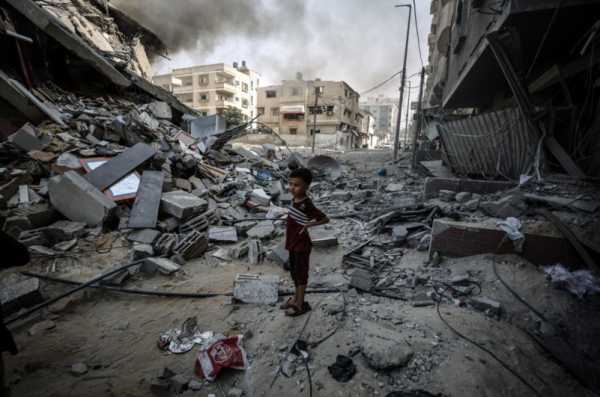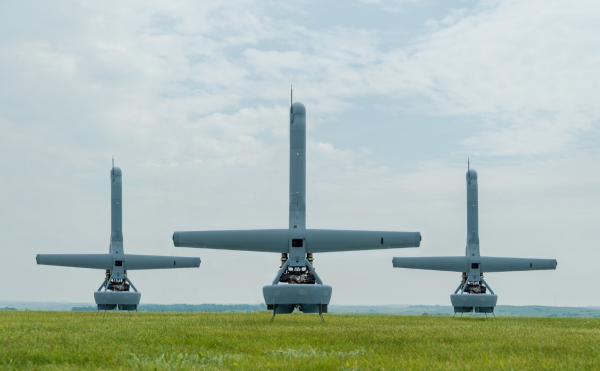
When explosive weapons are used in populated areas, up to 90 per cent of victims are civilians (Photo: UNRWA)
Since 7 October, when Hamas forces entered Israeli territory, killing an estimated 1,400 people — the vast majority of whom were civilians — and kidnapping over 200 more, the Israeli Defence Force (IDF) reported hitting more than 11,000 targets (including a refugee camp) in the Gaza strip as it attempts to “eliminate Hamas”, and has begun ground excursions into the northern parts of the Strip.
Israel has been employing siege tactics, cutting off water and electricity, barely allowing humanitarian aid deliveries, and failing to create safe ways for the population to leave.
This has turned the Gaza strip — one of the most densely populated places on the planet — into a death trap for more than two million civilians living in it.
According to the Palestinian ministry of health, over 8,000 civilians in the Gaza strip have been killed since the start of Israel’s military operation. This includes at least 3,195 children, more than the number dying annually in all conflict zones (across more than 20 countries) since 2019.
International humanitarian law (IHL) aims to limit the price exacted by war on combatants and non-combatants alike. Recognising the impact of hostilities on civilians, IHL requires that all sides minimise harm inflicted on them. This is not only a legal and moral imperative, but also a strategic one: harm to civilians not only makes peace more difficult to achieve and military operations less effective, it also sows the seeds of future conflicts.
In urban environments, population density and the presence of critical infrastructure make protecting civilians a unique challenge. When explosive weapons are used in populated areas, up to 90 percent of victims are civilians.
Direct casualties from the use of airstrikes and artillery are compounded by interruptions in the functioning of medical facilities, water supply, power and wastewater management, resulting in further illnesses and deaths; displacement, and damage to cities’ commercial, social and cultural infrastructure limits opportunities to make a living and frays social ties.
In Gaza, an extra challenge is the presence of a network of subterranean tunnels, and the question of how to target fighters hiding in them without inflicting more damage on an already vulnerable population.
Comparisons
The recent historic record of urban operations is sobering; the nine-month battle over Mosul aiming to dislodge ISIS resulted in 9,000-10,000 civilians killed, while the 2022 siege of Mariupol is estimated to have killed more than 10,000 civilians.
If the current trends remain unchanged, the campaign in Gaza will be on track to becoming one of the deadliest urban conflicts in recent history.
However, the difficulties related to protecting civilians in urban environments do not justify neglecting the responsibility to proactively reduce harm. There is a multitude of measures that can help armed forces operationalise the protections contained in IHL and limit the impact of kinetic operations on populations.
One effective measure is a “no-strike list” that determine which targets must not be destroyed to prevent excessive harm to the population, such as hospitals, water installations, power stations and communication networks.
Sign up for EUobserver’s daily newsletter
All the stories we publish, sent at 7.30 AM.
By signing up, you agree to our Terms of Use and Privacy Policy.
For civilians caught in the middle of a kinetic operation, communication is frequently a lifeline: it enables them to understand threats and try to protect themselves through community networks. The second measure is safe havens — permanent or temporary — allowing civilians to shelter.
Calls for civilians to leave the area of operations are not grounds to assume that everyone who stayed behind is a combatant; they also need to be effective, i.e. combined with safe evacuation routes and available places to shelter. A third example is a humanitarian pause in the fighting, sometimes in designated areas, to allow civilians to restock on supplies, seek medical care, relocate to safe zones, and access lifesaving humanitarian aid.
Last week’s European Council summit conclusions on Israel-Palestine restate the commitment to protecting civilians from harm. In addition, a year ago, 23 members of the European Union signed the Political Declaration on Strengthening the Protection of Civilians from the Humanitarian Consequences Arising from the Use of Explosive Weapons in Populated Areas. Through the declaration, they committed to work to limit the use of explosive weapons in populated areas, and to address the harm that they do.
Now is the time to make good on these commitments, pushing for the safety of civilians to be front and centre in this war, providing effective humanitarian assistance, and working to moderate the use of explosive weapons to mitigate civilian harm.
What Hamas did to Israeli civilians has no justification and European countries have rightly recognised Israel’s right to self-defence within the limits of IHL. It is high time to flesh out what this means in practice and to ensure that protection of civilians and the practical measures implementing it truly shape the reality on the ground.
Source: euobserver.com



